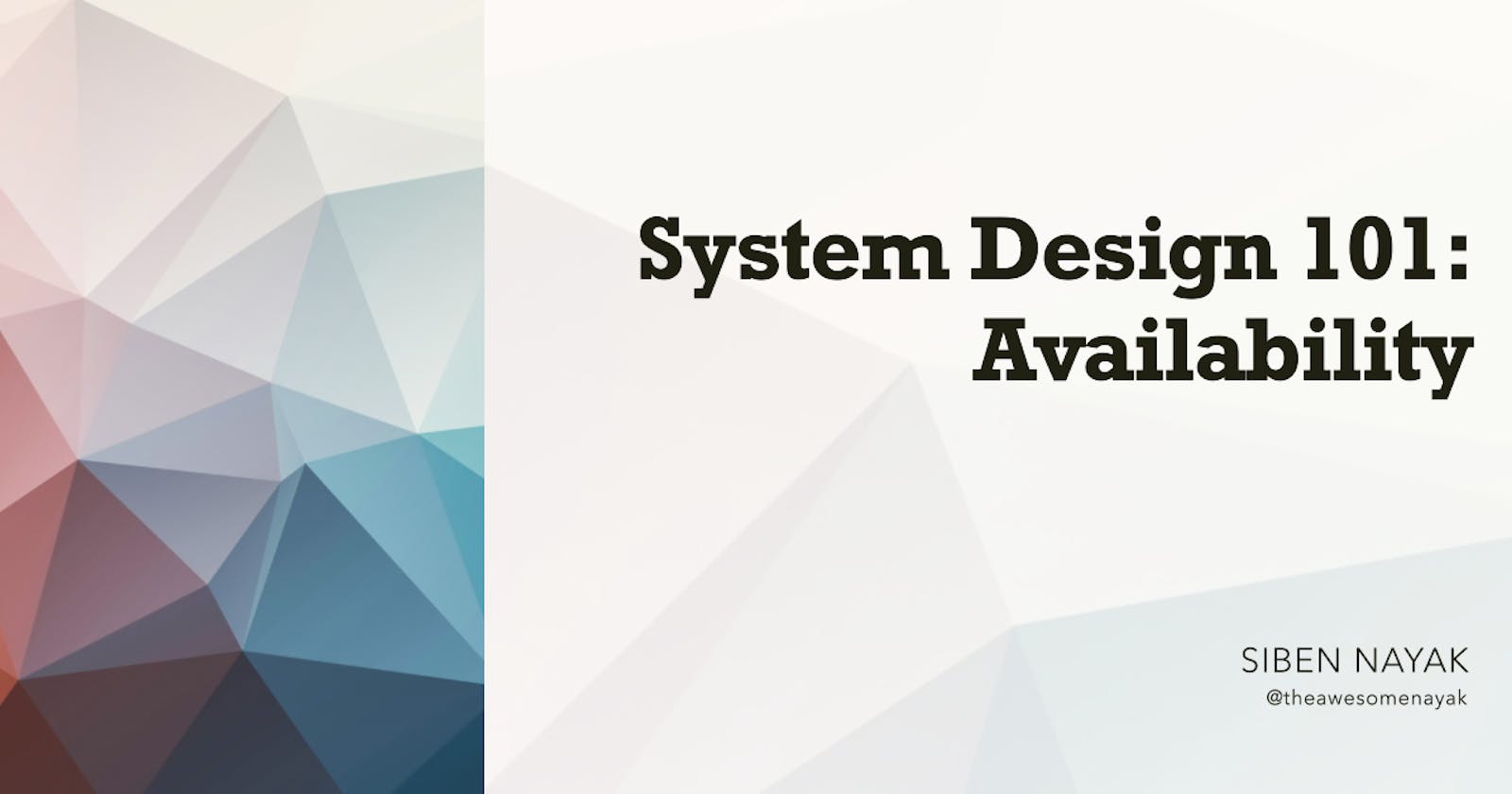System Design 101 - Availability
Understanding Availability - How to Build Highly Available and Reliable Systems
In the previous post, we explored the key system design concepts that every software engineer should know. One of the critical factors that we mentioned was availability.
In today's digital age, users expect software and applications to be always available, with little to no downtime. Availability is crucial to ensuring a positive user experience and can significantly impact a company's reputation and bottom line.
In this post, we will delve deeper into the concept of availability, discuss its importance, and explore some real-world examples of outages.
What is Availability?
Availability refers to the ability of a system or application to be accessible and functional for users, typically measured as a percentage of time that the system or application is available over a given period. Availability can be impacted by various factors, including hardware failures, software errors, network issues, and security breaches.
Importance of Availability
Availability is a critical factor in determining the success of any software system. In today's world, where businesses are heavily dependent on software, any downtime or disruption can lead to severe consequences, including loss of revenue, damage to brand reputation, and loss of customer trust.
For instance, in 2019, Microsoft Azure experienced a significant outage that impacted many services and regions for almost two hours. The outage affected millions of customers and businesses, leading to significant financial losses and reputational damage for Microsoft. Another example is the 2018 AWS S3 outage that lasted several hours, impacting some of the world's most popular websites and services, including Netflix, Airbnb, and Slack.
Given the high stakes, it is crucial to prioritize availability in software design and architecture. Building a highly available system requires careful planning, testing, and monitoring to ensure that the system can withstand unexpected failures and disruptions. It is also essential to consider the trade-offs between availability and other system attributes, such as performance, cost, and complexity.
Ensuring Availability
Ensuring availability requires a proactive approach to system design and management. Some of the ways for increasing availability include:
Distributed architecture: One way to increase availability is to adopt a distributed architecture that can withstand component failures. A distributed architecture can distribute traffic across multiple nodes, and if one node fails, traffic can be redirected to other nodes, thus maintaining availability. For example, Netflix has a distributed architecture that allows it to operate even if one of its data centres goes down.
Redundancy: Another way to increase availability is to add redundancy to the system. Redundancy can be achieved by deploying multiple instances of the same application across different servers or data centres. If one instance goes down, traffic can be redirected to other instances. For example, Amazon Web Services (AWS) provides the ability to create multiple instances of the same application in different availability zones.
Monitoring: Monitoring the system can help identify issues before they turn into outages. There are several tools available to monitor system performance, such as Nagios, Zabbix, and New Relic. Monitoring can help detect potential issues and allow for proactive measures to be taken to prevent outages.
Disaster recovery planning: It's important to have a disaster recovery plan in place in case of a major outage. This plan should outline the steps to be taken to bring the system back online and the roles and responsibilities of each team member. For example, Google has a disaster recovery plan that outlines the steps to be taken in case of a data centre outage.
Automation: Automating the deployment and management of the system can help reduce the risk of outages caused by human error. Automation tools such as Ansible, Puppet, and Chef can be used to automate the deployment and configuration of the system.
Outages related to availability
AWS Outage (2017): Amazon Web Services experienced a major outage in 2017, which affected several of its services including Amazon S3 and Amazon EC2. The outage lasted for several hours and impacted several high-profile websites and applications, including Netflix, Reddit, and Slack.
GitHub Outage (2018): GitHub, the popular code repository hosting service, experienced a major outage in 2018 that lasted for several hours. The outage was caused by a networking issue that resulted in the service becoming unavailable for users.
Microsoft Azure Outage (2020): Microsoft Azure, the cloud computing platform, experienced an outage in 2020 that lasted for several hours. The outage was caused by a DNS issue that prevented users from accessing several of its services.
Conclusion
Availability is a crucial aspect of any software system. To ensure high availability, a distributed architecture with redundancy, monitoring, disaster recovery planning, automation, and testing can be implemented. It's also important to learn from the outages and incidents that have occurred in the industry to prevent similar issues in the future.
By following these best practices, organizations can ensure that their software systems remain available and provide a reliable experience to their users.

